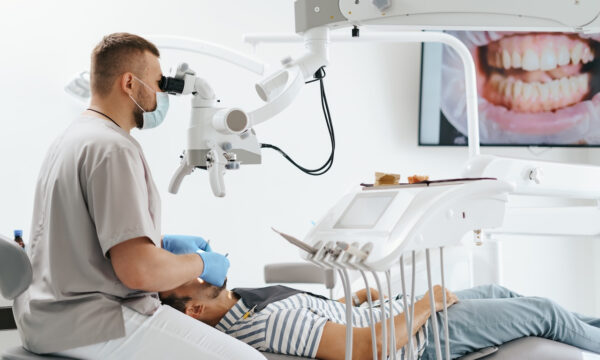The role of Anavamed 10 (Oxandrolone) steroids in weight gain
Oxandrolone is an oral steroid often prescribed for women, leading to its nickname. Initially launched by G.D. Searle & Co, it made its debut in the 1960s under the brand name Anavar. Anavamed 10, as it is also known, shares similarities with the naturally occurring steroid, testosterone. This formulation aims to provide a specific therapeutic outcome while minimising side effects commonly associated with steroid use.
It’s known for its role in promoting muscle growth. This anabolic steroid helps individuals maintain their weight, especially in cases where weight loss occurs due to surgery or infection. Additionally, it is utilised by those suffering from osteoporosis to alleviate bone pain, highlighting its multifaceted applications.
This article explores the role of Oxandrolone, also referred to as Anavamed 10, in facilitating weight gain, along with its mechanism of action. It’s crucial to emphasise that it should only be used under the guidance and prescription of a healthcare professional. Misuse or unsupervised use of anabolic steroids can lead to adverse health effects.
This examination aims to provide a basic understanding of how Oxandrolone functions within the body to achieve its intended health benefits.
How does Anavamed ten play its role in weight gain?
Oxandrolone contributes to an increase in muscle mass and body weight through several mechanisms:
- It enhances protein synthesis within the body, aiding in muscle development and repair.
- It regulates the activity of androgen receptors in skeletal muscle, which plays a crucial role in muscle growth.
- It boosts the production of insulin-like growth factor 1 (IGF-1), further supporting muscle and bone development.
The use of Anavamed 10 leads to an increase in lean muscle mass without significant fat deposition or water retention. Moreover, it can stimulate appetite, potentially leading to increased calorie consumption. Importantly, Anavamed 10 also supports bone density enhancement. Together, these effects facilitate healthy weight gain, making it a consideration for individuals looking to increase their muscle mass and overall weight in a controlled and healthy manner.
A study claims that when a healthy individual takes this steroid, it can increase protein synthesis by up to 44% and enhance its resistance effect.
Mechanism of action
Oxandrolone is classified as an androgenic anabolic steroid, characterised by its pronounced anabolic effects over androgenic effects. It is engineered to enhance the anabolic properties of testosterone – responsible for muscle building and recovery – while minimising androgenic effects, which are associated with puberty and include changes like increased facial hair and voice deepening.
The anabolic action of oxandrolone facilitates protein production in the body by utilising amino acids, the building blocks of protein. Furthermore, oxandrolone aids in preventing protein breakdown by promoting nitrogen retention within the muscles. This process leads to the growth or buildup of skeletal muscles, underpinning the steroid’s effectiveness in muscle development and recovery.
Absorption and digestion
Oxandrolone, taken orally, is absorbed through the gastrointestinal tract. Approximately one hour after ingestion, it reaches its peak concentration in the bloodstream. This steroid demonstrates a high affinity for binding proteins, with about 95% of it bound to plasma proteins. This binding helps stabilise the steroid, protecting it from rapid breakdown by the liver.
Additionally, Oxandrolone exhibits a resistance to metabolic changes, known as biotransformation. As a result, around 28% of the original compound is excreted through the urine without undergoing any change. This property highlights its efficient use and processing within the body.
Difference from testosterone
Oxandrolone stands out for its heightened ability to stimulate the body’s anabolic processes, such as increasing muscle size and strength, minimising fat accumulation, and boosting protein synthesis. Additionally, it significantly reduces the occurrence of unwanted androgenic effects.
In contrast, testosterone, while essential for various physiological functions, has a more balanced anabolic to androgenic activity ratio of 1:1. This balance means that while it supports muscle growth and strength, it also promotes androgenic effects. Oxandrolone, with its anabolic to androgenic ratio of 10:1, is tailored more towards enhancing anabolic activity with fewer androgenic side effects. This makes Oxandrolone a preferred option for individuals seeking the benefits of increased muscle mass and strength without the pronounced androgenic effects associated with testosterone.
Adverse effects
While Oxandrolone offers therapeutic benefits, it’s essential to acknowledge its potential adverse effects. Misuse or long-term use can lead to hormonal imbalances, liver damage and psychological effects, including mood swings and increased aggression. Consultation with a healthcare provider is crucial to mitigate these risks.
Conclusion
Oxandrolone, also recognised as Anavamed 10, serves a crucial function in the realms of weight management and muscle development. Its key actions – enhancing protein synthesis and promoting bone density – render it a particularly effective option compared to testosterone. Therefore, Oxandrolone is considered a vital anabolic steroid for those aiming to achieve healthy weight gain through increased muscle mass and improved bone health.
The editorial unit




















Facebook
Twitter
Instagram
YouTube
RSS